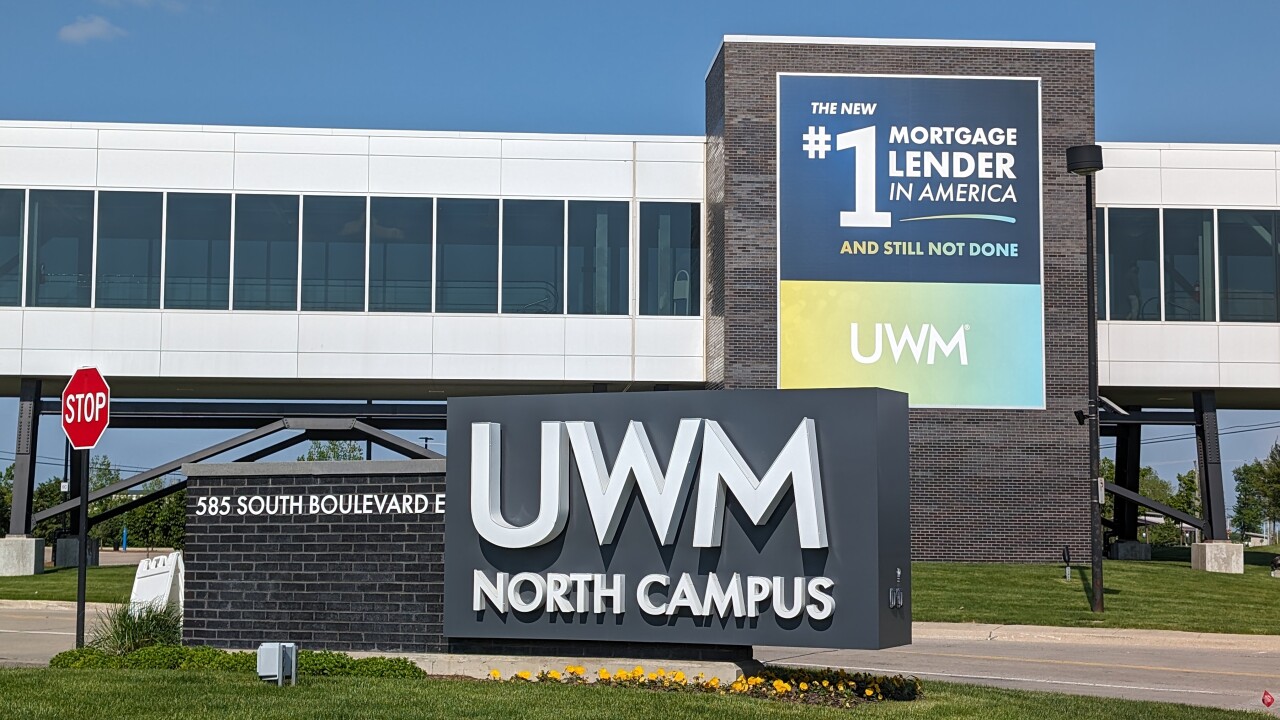Take a look at 2020 pay packages for bank CEOs and a headline theme emerges: total compensation rose even as bonuses decreased.
But peel back a layer and you’ll find that in a year rife with distress and uncertainty, bank boards and compensation committees relied less on numbers and formulas, and more on their perceptions of how well CEOs led their banks through the pandemic. Doing so helped limit the size of bonus cuts.
It’s called discretion and it played a big role in 2020 pay outcomes, said Kelly Malafis, founding partner of Compensation Advisory Partners, a consulting firm that reviewed and analyzed CEO pay trends at 60 large and regional U.S. banks that filed their annual proxy statements before April 10.

Some companies that had discretion built into their bonus plans — meaning they could take into account harder-to-measure factors such as employee engagement and customer satisfaction — were able to use a more holistic approach to determining CEO bonus pay, Malafis said.
Others with entirely formulaic methods looked at measures such as relative performance to determine their results and in most cases adjusted results upward, thus lifting bonus pay, she said.
“So while bonuses were down [overall], they could have been down more,” Malafis said.
That factor, combined with higher long-term incentive pay, and smaller hikes in salaries, resulted in a median increase in total direct CEO compensation of 8.9% from 2019 to 2020, the analysis found.
Executive pay garners a lot of attention in a normal year, but
Banks were hurt financially by the pandemic. Fearing a wave of loan losses as the pandemic choked the economy, firms socked away billions of dollars in reserves to cover potential bad loans. As a result, full-year net income at commercial banks and savings institutions insured by the Federal Deposit Insurance Corp. plunged 35.9% compared with 2019, while the average return-on-assets ratio fell by nearly half, from 1.29% in 2019 to 0.74% last year.
Bank stock prices also suffered, tanking for three-quarters of the year until they began climbing again in December with the news that COVID-19 vaccines would become available.
For all economic sectors, making decisions about CEO pay in such circumstances has been “unchartered territory,” said Lisa Edwards, president and chief operating officer of Diligent, a governance software firm that tracks compensation trends for Russell 3000 Index companies.
“There’s certainly been a lot of scrutiny on pay given the pandemic and last year’s need to conserve cash in light of the pandemic,” Edwards said. “We saw a number of companies that announced reductions, particularly CEO compensation reductions.”
At many large and regional banks, the uncertainty surrounding the pandemic and how it would affect the industry meant that by and large boards and committees “took a wait-and-see approach” regarding decisions about incentive plans for 2020, Malafis said.
That way, they could consider full-year financial performance and take into account less easily quantified factors, she said.
The result: Of the 60 banks analyzed, 60% reported a year-over-year increase in total CEO pay, while 38% reported a decrease. Just one CEO — Jamie Dimon of JPMorgan Chase — saw his pay package remain unchanged at $31.5 million.
The year-over-year increases were largely a result of upticks in long-term incentive awards, the analysis showed. Seventy percent of the banks boosted long-term incentives, which are granted to executives based on the future performance of a company.
At the same time, 59% of the banks cut annual bonuses, which are awarded for near-term performance such as higher earnings and improving stock prices. Thirty-six percent of the banks that were analyzed increased bonuses, and 5% kept them flat.
Of the 39 companies that made changes to their bonus and long-term incentive plans, 26 of them, or 67%, applied or added discretion to determine bonus payments, the analysis showed. In nearly all cases, the discretion led to upward adjustments in bonuses, according to Compensation Advisory Partners.
Meanwhile, changes to outstanding long-term incentive plans tied to financial metrics were much less common — occurring at only 13% of the companies analyzed, Malafis said.
“Application of discretion and taking into account all of the factors of 2020 — the pandemic, leadership and the ability to pivot and navigate — a lot of banks tried to find that balance, so adjustments to bonuses were fairly common,” Malafis said. “It’s balancing overall performance and retention of key talent with the alignment of shareholders, and it was a delicate balance.”
There could be even more use of discretion in bonus pay for 2021, as the timing of a full economic recovery remains unclear, making it hard to set financially based performance goals, said Shaun Bisman, principal at Compensation Advisory Partners.
But don’t expect the increased reliance on discretionary factors to determine CEO pay to be an enduring result of the pandemic, he said.
“I would imagine in two or three years the plans would look very similar to what they looked like pre-COVID,” Bisman said. “The overall structure won’t change dramatically.”





